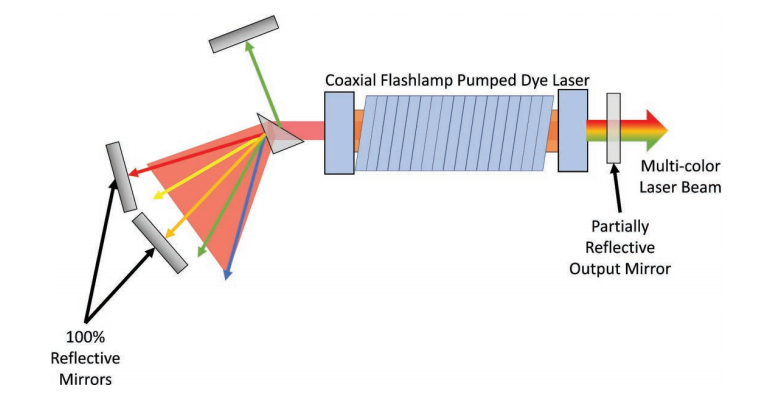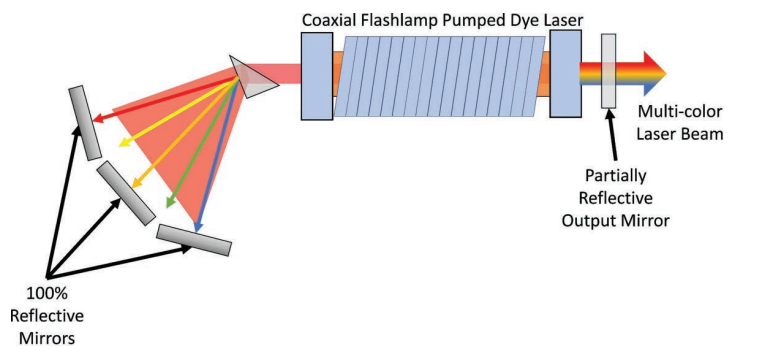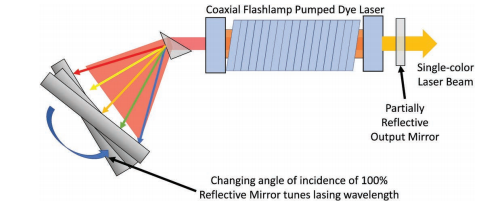What is Tunability of a Laser?
Many lasers are tunable across many wavelengths. The dye laser has a very broadband gain curve and, in fact, takes some significant effort to generate narrow linewidth pulses. The HeNe laser is inherently narrow linewidth, but we did mention that it could lase at several different laser wavelengths. We have mentioned transition selection but only suggested this is done with specifically coated or designed cavity optics.
Most laser transitions that can be selected by tuning the gain curve is done so by limiting the gain where lasing is not desired and by maximizing it where it is desired. Some lasers can be tuned across very broad portions of the spectrum while others are limited to narrow bands. One of the most tunable is the dye laser. Figure below shows a tunable cavity configuration for a coaxial flashlamp-pumped dye laser. A standard flat broadband partially reflective output coupler is used, but the back-reflector side of the cavity consists of a dispersive element like a prism that spreads the spectral line pathways out in spatial dimension much in the same way the monochromator does. As the pathways are separated by the dispersive element, a 100% reflector for each desired wavelength is placed in the appropriate location. In this way, multiple wavelengths from one laser can be achieved.


In reality, it is difficult to achieve more than two to three lasing lines due to physical dimensional constraints and due to there only being so much gain within the cavity for each spectral mode. Figure 6.18 shows a second configuration for tuning and multiwavelength operation of a dye laser by using a first-surface reflection path off the prism. The optic can be coated to maximize the desired wavelength’s reflection and to increase the cavity gain for that particular pathway. Again, however, there is only so much gain in the cavity available for the multiple lines.
Below shows a configuration for single line tuning. The incidence angle for a single reflector can be changed to tune the laser across the available gain spectrum. A second alternative would be to rotate the prism.
There are many applications for tunability such as tuning the laser source across an absorption spectrum of a molecule to determine the identity of the molecule based on fluorescence and absorption.

